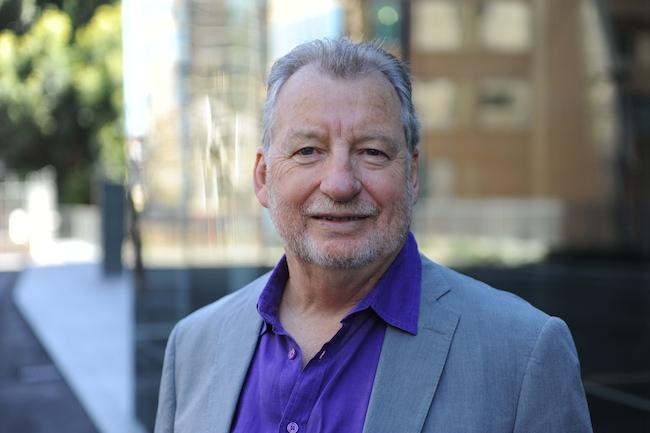
Professor Jock Collins. Photo by Joanne Saad.
As Australia begins to receive the first of its special intake of 12,000 Syrian refugees, the Productivity Commission has criticised the effectiveness of settlement services for humanitarian immigrants.
This is one of the key findings of the commission’s draft report on Australia’s immigration program. The report, released last week, also calls for more effective regulation to minimise the exploitation faced by temporary migrant workers.
What’s the state of Australian immigration?
These two issues – the treatment of humanitarian immigrants in Australia and the exploitation of temporary immigrants – are the most controversial aspects of the current immigration program.
In most other respects, the report gives a green light to current immigration policy and its points-test system for selecting permanent immigrants.
The report notes the rapid growth of temporary immigration. Between 2003 and 2014, international student visa grants increased by about 80%. The numbers of skilled 457 workers and working holidaymaker visas granted each increased by about 170%.
In 2015 there were more than 1.5 million temporary migrants in Australia. India, China and the UK are the top three source countries.
With most temporary visas uncapped, Australia’s temporary immigration is “demand driven”. The numbers entering are determined by the demand from employers for 457 workers, by international students for Australian university education and by the number of young people wanting a working holiday in Australia. Strong demand has led to more than 700,000 temporary migrants entering Australia compared to around 200,000 permanent migrants.
This is the most significant change in nearly seven decades of post-war Australian immigration, though many temporary immigrants transition to permanent immigration status.
The Productivity Commission is justifiably concerned about the lack of research into temporary immigration. It called for:
… a better understanding of the labour market impacts of temporary migration programs.
The findings of a large-scale national survey of temporary immigrants being conducted by the Department of Immigration will be very welcome in this regard. However, it is hard to understand what took so long.
The recent exposure of exploitation of international students by 7/11 franchises, the long hours for under-award pay for working holidaymakers in Baiada chicken factories and the stories of exploitation of 457 workers by employers such as the Pie Face franchise undermines the temporary immigration program’s integrity. Co-ethnic labour-hire firms or employers are often to blame.
Better monitoring of temporary migration is required. The Productivity Commission recommends that the Fair Work Commission introduce a smartphone app to give temporary workers access to knowledge about their rights and links that allow them to lodge complaints about their experiences.
Decoding the report
The Productivity Commission has a reputation for supporting hard-nosed free-market policy advice. Economic rationalists rule. Two of the draft report’s findings are, therefore, a little surprising.
One is its rejection of a shift away from the current points-test system of immigrant selection to one of auctioning off immigration places to the highest bidder. Such a move, the report argues, “would essentially place short-term revenue-raising objectives ahead of medium to longer-term economic and social considerations”. It could undermine public confidence in the Australian immigration system.
The other surprise is a very negative take on business and investor migration. The report recommends that the investor visa, introduced just years ago to attract more wealthy immigrants to Australia, should be scrapped.
Like every country in the world, Australia has been chasing millionaire migrants – particularly those who will set up a business in Australia. Australia has had a business migration program (now in the guise of the business talent 132 visa) since the 1970s but has always struggled to fill the annual quota.
In late 2012, the government opened the door to millionaire migrants a bit wider by introducing a new temporary visa pathway – the business innovation and investment visa (188) – for immigrant investors.
The attraction for potentially wealthy immigrants is that the age and English-language ability requirements are more relaxed than under the business talent (permanent) visa for immigrant entrepreneurs. But from November 2012 to March 2015, only 751 significant investor visas were granted, 89% of these to Chinese immigrants.
The report concludes that the the business migration program does not make a significant contribution to entrepreneurship in Australia. Most immigrant entrepreneurs in Australia do not arrive as millionaires under special business or investor visas but as permanent migrants under the skilled or family categories or as humanitarian immigrants. Other immigrant entrepreneurs emerge from those who transfer from temporary to permanent visas.
However, the report ignores these immigrant entrepreneurs and the contributions they make to Australia’s economy and society. This is a yawning gap in an otherwise comprehensive report on contemporary Australian immigration policy.
This article originally appeared on The Conversation.

